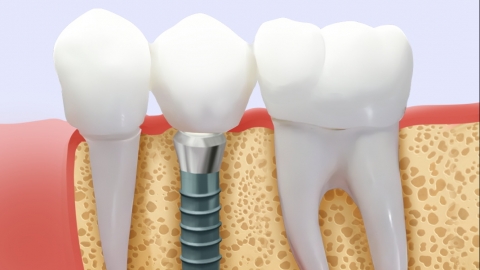How many types of implants are there for dental implants?
Generally, dental implants involve surgically placing an artificial tooth root into the alveolar bone at the site of tooth loss. After the implant forms a strong osseous integration with the alveolar bone, an abutment and crown are installed to restore the tooth's shape and function. The usual reference price for dental implants ranges from 3,000 to 20,000 yuan per tooth. Improvement is typically noticeable 3-6 months after surgery, although symptoms such as swelling and infection may occur. There are five types of dental implants: root-form implants, cylindrical implants, conical implants, blade-shaped implants, and zygomatic implants. A detailed explanation is as follows:

1. Root-form Implants
This type of implant closely resembles the natural tooth root in shape and is currently the most widely used. Its design conforms to the physiological structure of teeth. After being implanted into the alveolar bone, it can better simulate the force distribution of a natural tooth root, allowing for reasonable distribution of occlusal forces.
2. Cylindrical Implants
Cylindrical implants are shaped like a cylinder and have a relatively large surface area. Under conditions of sufficient bone volume, they provide good initial stability. Their threaded design can be adjusted according to different bone conditions—for example, the threads can tightly engage with dense bone tissue. This type of implant is particularly suitable for cases of single or multiple missing teeth where the alveolar bone condition is favorable.
3. Conical Implants
Conical implants have a tapered shape, wider at the top and narrower at the bottom. Their advantage lies in relatively easier insertion, especially suitable for cases where the alveolar bone density is low or the alveolar bone shape is irregular. During implantation, they can gradually seat along the contour of the alveolar bone, minimizing damage to surrounding bone tissue, while also providing good post-implant stability.
4. Blade-shaped Implants
Blade-shaped implants resemble a blade in shape and come in various forms and thicknesses. They are primarily used in cases where the width of the alveolar bone is insufficient but its length is relatively adequate. By adjusting the angle and position of the blade, it can adapt to a narrow alveolar ridge and achieve a larger implant-bone contact area under such conditions, providing sufficient supporting force.
5. Zygomatic Implants
Zygomatic implants are a special type of long implant that can pass through the maxillary sinus floor and anchor onto the zygomatic bone. They are primarily used for patients with severe maxillary atrophy and extreme bone deficiency. However, this procedure requires highly experienced surgeons, advanced equipment, and expertise due to the complex anatomical structures of the zygomatic region. Close postoperative monitoring of the patient's response and implant healing is necessary to ensure successful implantation and long-term stability.
It is recommended to visit a reputable hospital and undergo the above procedures under the guidance of a qualified dentist to ensure the safety and reliability of the surgery. Avoid strenuous activities shortly after surgery, and refrain from brushing, rinsing, or consuming excessively hot or hard foods.





